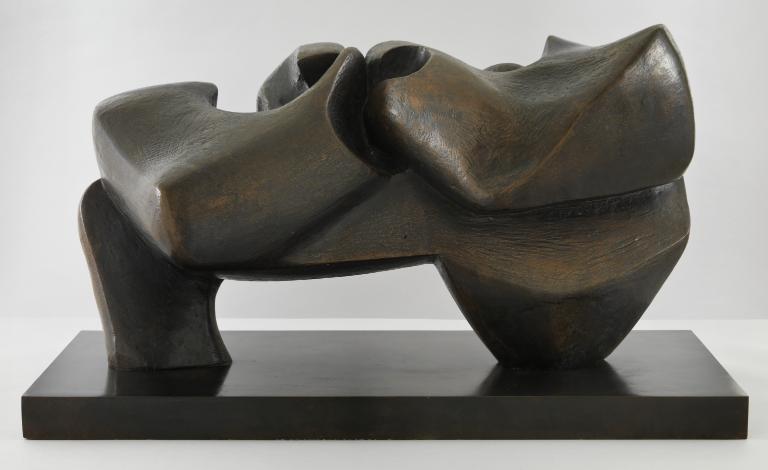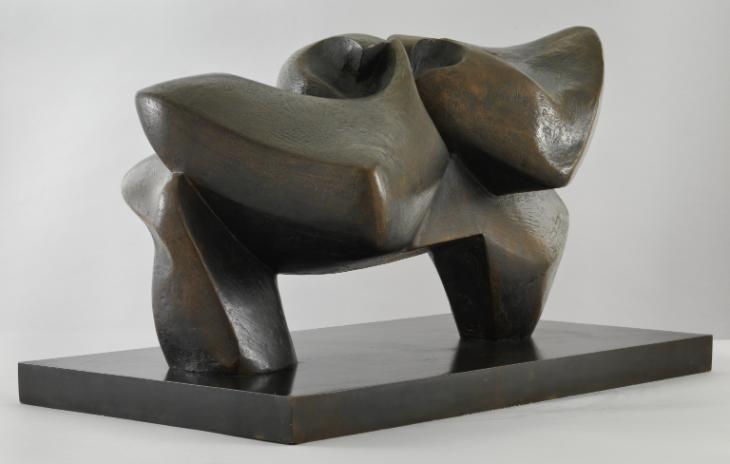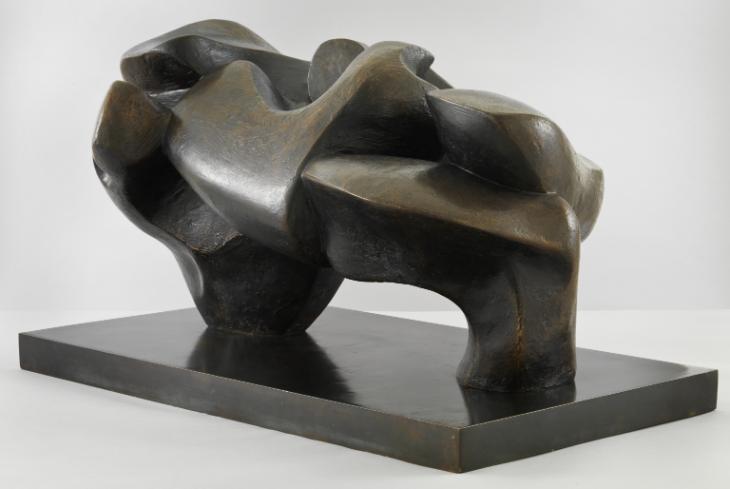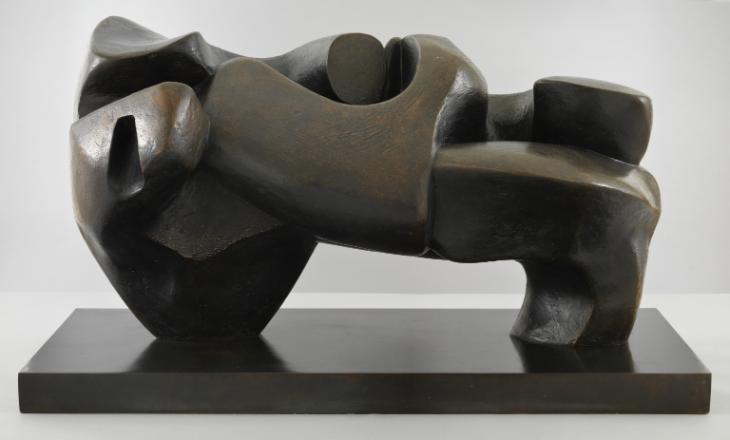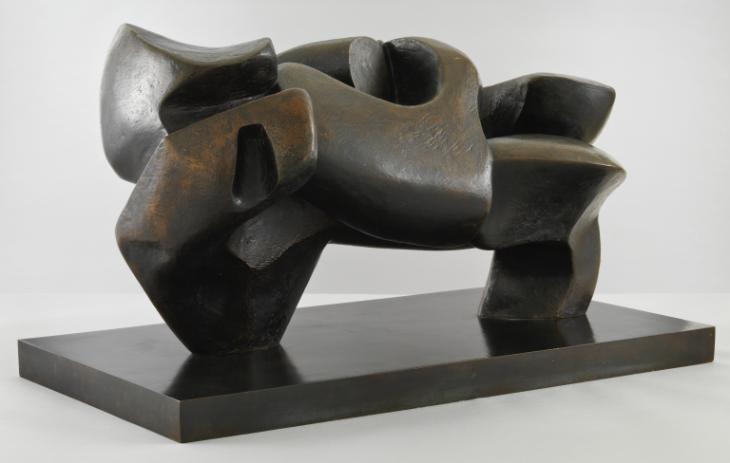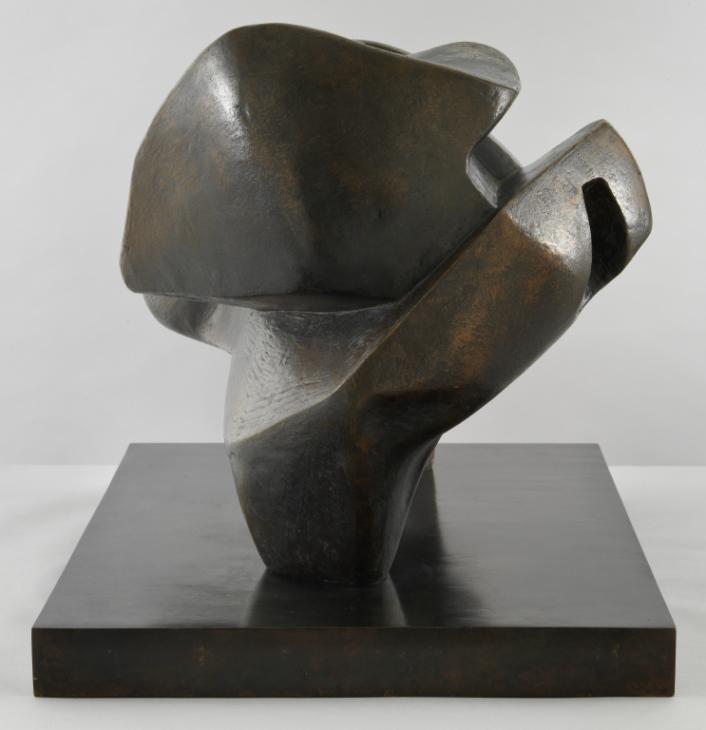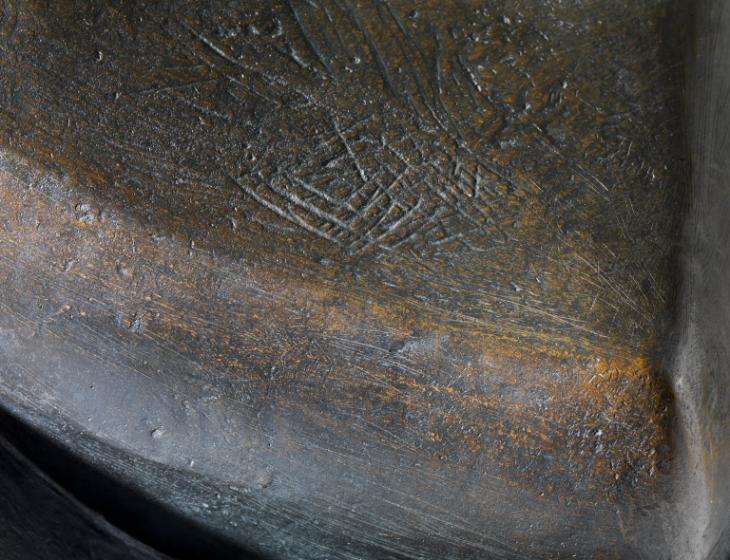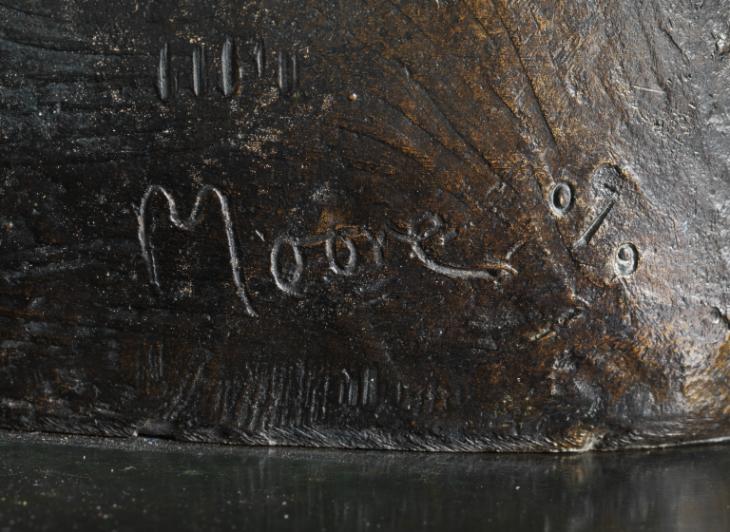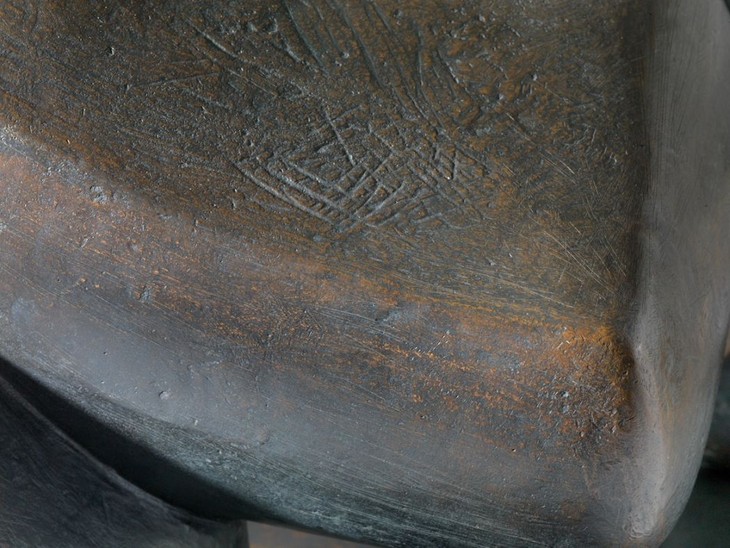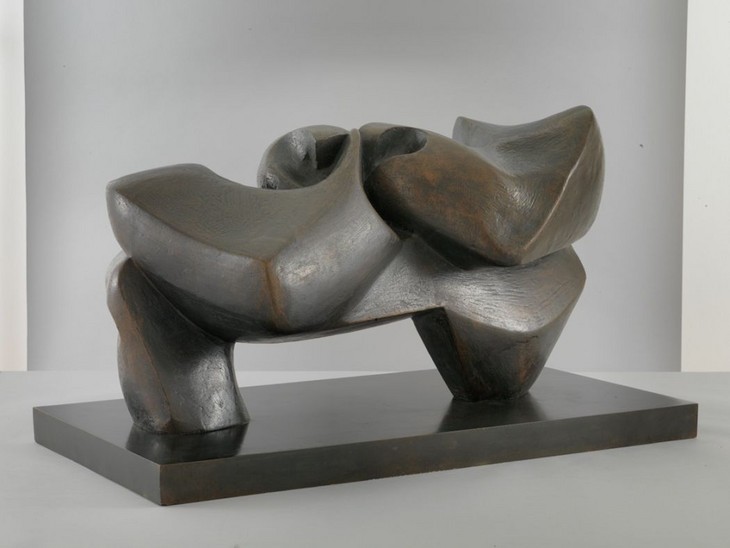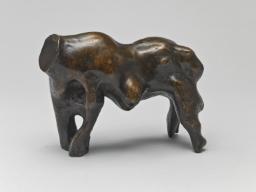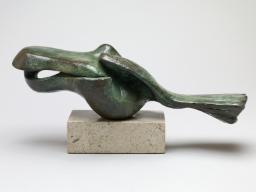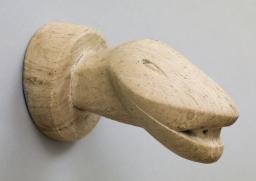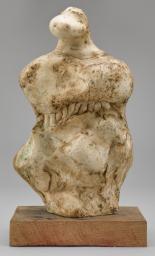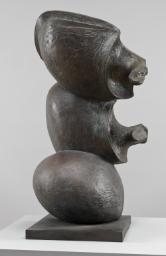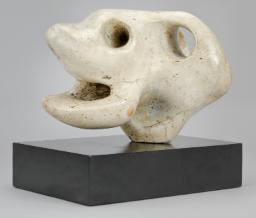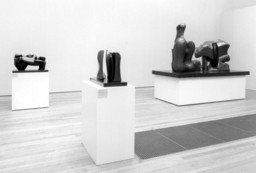Henry Moore OM, CH Large Slow Form 1962, cast 1968
Image 1 of 9
-
 Henry Moore OM, CH, Large Slow Form 1962, cast 1968© The Henry Moore Foundation. All Rights Reserved© The Henry Moore Foundation. All Rights Reserved
Henry Moore OM, CH, Large Slow Form 1962, cast 1968© The Henry Moore Foundation. All Rights Reserved© The Henry Moore Foundation. All Rights Reserved -
 Henry Moore OM, CH, Large Slow Form 1962, cast 1968© The Henry Moore Foundation. All Rights Reserved© The Henry Moore Foundation. All Rights Reserved
Henry Moore OM, CH, Large Slow Form 1962, cast 1968© The Henry Moore Foundation. All Rights Reserved© The Henry Moore Foundation. All Rights Reserved -
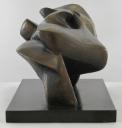 Henry Moore OM, CH, Large Slow Form 1962, cast 1968© The Henry Moore Foundation. All Rights Reserved© The Henry Moore Foundation. All Rights Reserved
Henry Moore OM, CH, Large Slow Form 1962, cast 1968© The Henry Moore Foundation. All Rights Reserved© The Henry Moore Foundation. All Rights Reserved -
 Henry Moore OM, CH, Large Slow Form 1962, cast 1968© The Henry Moore Foundation. All Rights Reserved© The Henry Moore Foundation. All Rights Reserved
Henry Moore OM, CH, Large Slow Form 1962, cast 1968© The Henry Moore Foundation. All Rights Reserved© The Henry Moore Foundation. All Rights Reserved -
 Henry Moore OM, CH, Large Slow Form 1962, cast 1968© The Henry Moore Foundation. All Rights Reserved© The Henry Moore Foundation. All Rights Reserved
Henry Moore OM, CH, Large Slow Form 1962, cast 1968© The Henry Moore Foundation. All Rights Reserved© The Henry Moore Foundation. All Rights Reserved -
 Henry Moore OM, CH, Large Slow Form 1962, cast 1968© The Henry Moore Foundation. All Rights Reserved© The Henry Moore Foundation. All Rights Reserved
Henry Moore OM, CH, Large Slow Form 1962, cast 1968© The Henry Moore Foundation. All Rights Reserved© The Henry Moore Foundation. All Rights Reserved -
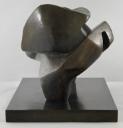 Henry Moore OM, CH, Large Slow Form 1962, cast 1968© The Henry Moore Foundation. All Rights Reserved© The Henry Moore Foundation. All Rights Reserved
Henry Moore OM, CH, Large Slow Form 1962, cast 1968© The Henry Moore Foundation. All Rights Reserved© The Henry Moore Foundation. All Rights Reserved -
 Henry Moore OM, CH, Large Slow Form 1962, cast 1968© The Henry Moore Foundation. All Rights Reserved© The Henry Moore Foundation. All Rights Reserved
Henry Moore OM, CH, Large Slow Form 1962, cast 1968© The Henry Moore Foundation. All Rights Reserved© The Henry Moore Foundation. All Rights Reserved -
 Henry Moore OM, CH, Large Slow Form 1962, cast 1968© The Henry Moore Foundation. All Rights Reserved© The Henry Moore Foundation. All Rights Reserved
Henry Moore OM, CH, Large Slow Form 1962, cast 1968© The Henry Moore Foundation. All Rights Reserved© The Henry Moore Foundation. All Rights Reserved
© The Henry Moore Foundation. All Rights Reserved
Henry Moore OM, CH,
Large Slow Form
1962, cast 1968
© The Henry Moore Foundation. All Rights Reserved
Large Slow Form was cast in bronze in 1968 and is an enlarged version of Slow Form Tortoise, made in 1962. The sculpture is made up of five interlocking sections and evokes the shape of short-legged animal, albeit an unidentifiable one. The critic John Russell remarked in 1973: ‘Over and over again in the 1950s and 1960s Moore invented animal-forms which belong to no known bestiary and yet are quintessentially plausible’.
Henry Moore OM, CH 1898–1986
Large Slow Form
1962, cast 1968
Bronze
420 x 766 x 423 mm
Inscribed ‘Moore 0/9’ on foot
Presented by the artist 1978
Artist’s copy aside from edition of 9 plus 1 artist’s copy
T02290
Large Slow Form
1962, cast 1968
Bronze
420 x 766 x 423 mm
Inscribed ‘Moore 0/9’ on foot
Presented by the artist 1978
Artist’s copy aside from edition of 9 plus 1 artist’s copy
T02290
Ownership history
Presented by the artist to Tate in 1978 as part of the Henry Moore Gift.
Exhibition history
1969
Henry Moore, Heslington Hall, York, March 1969 (?another cast exhibited no.32).
1969
Henry Moore: Drawings and Sculpture, Gordon Maynard Gallery, Welwyn Garden City, July 1969, no.6.
1970
Henry Moore: Bronzes 1961–70, Marlborough Gallery, New York, April–May 1970, no.5.
1970
Henry Moore: Sculptures, Galerie Beyeler, Basel, May–June 1970 (?another cast exhibited no.9).
1971
Henry Moore, Musée Rodin, Paris, 1971, no.42.
1971
Henry Moore 1961–1971, Staatsgalerie Moderner Kunst, Munich, October–November 1971, no.3.
1971
Henry Moore: Sculpture, Drawings, Graphics, Turnpike Gallery, Leigh, November–December 1971, no.13.
1972
Henry Moore, Playhouse Gallery, Harlow, March–April 1972, no.6.
1972
Mostra di Henry Moore, Forte di Belvedere, Florence, May–September 1972, no.122.
1978
Henry Moore: 80th Birthday Exhibition, Cartwright Hall, Bradford, April–June 1978 (?another cast exhibited no.33).
1978
The Henry Moore Gift, Tate Gallery, London, June–August 1978, no number.
2005
Henry Moore y México, Museo Dolores Olmedo, Mexico City, June–October 2005, no.48.
References
1968
John Hedgecoe (ed.), Henry Moore, London 1968 (?another cast reproduced p.365).
1970
Henry Moore: Bronzes 1961–70, exhibition catalogue, Marlborough Gallery, New York 1970 (?another cast reproduced p.41).
1971
Henry Moore, exhibition catalogue, Musée Rodin, Paris 1971, reproduced.
1971
Henry Moore 1961–1971, exhibition catalogue, Staatsgalerie Moderner Kunst, Munich 1971, reproduced p.41.
1972
Mostra di Henry Moore, exhibition catalogue, Forte di Belvedere, Florence 1972, reproduced p.189.
1973
John Russell, Henry Moore, London 1973, p.184 (Slow Form (Tortoise) 1962 reproduced fig.107).
1977
Alan Bowness (ed.), Henry Moore. Volume 4: Complete Sculpture 1964–73, London 1977, no.502a, p.35 (?another cast reproduced).
1978
Henry Moore: 80th Birthday Exhibition, exhibition catalogue, Cartwright Hall, Bradford 1978 (?another cast reproduced no.33).
1978
The Henry Moore Gift, exhibition catalogue, Tate Gallery, London 1978, reproduced p.49.
1979
Alan G. Wilkinson, The Moore Collection in the Art Gallery of Ontario, Toronto 1979, p.179.
1981
[Richard Calvocoressi], ‘Large Slow Form: Tortoise’, The Tate Gallery 1978–80: Illustrated Catalogue of Acquisitions, London 1981, p.132.
1981
Henry Moore: Exposició Retrospectiva, Escultures, dibuixos i gravats 1921–1981, exhibition catalogue, Fundació Joan Miró, Barcelona 1981 (another cast reproduced p.51).
1982
Moore Mexico: Escultura, Dibujo, Grafica de 1921 a 1982, exhibition catalogue, Museo de Arte Moderno, Mexico, November 1982–January 1983 (?another cast reproduced no.67).
1986
Alan Bowness (ed.), Henry Moore. Volume 3: Sculpture and Drawings 1955–64, 1965, revised edn, London 1986, no.502a (?another cast reproduced pls.140–1).
1987
Henry Moore India, exhibition catalogue, National Gallery of Modern Art, New Delhi 1987 (another cast reproduced no.2).
1989
Henry Moore, exhibition catalogue, Fondation Pierre Gianadda, Martigny 1989 (another cast reproduced p.200).
2005
Henry Moore y México, exhibition catalogue, Museo Dolores Olmedo, Mexico City 2005, reproduced p.78.
2005
Anthony Caro, ‘Large Slow Form’ in David Mitchinson (ed.), Celebrating Moore: Works from the Collection of the Henry Moore Foundation, London 2006, pp.272–3 (another cast reproduced no.199).
Technique and condition
This bronze sculpture, which is mounted on a rectangular bronze base, has a highly textured surface displaying numerous tool marks and striations that accentuate its contours (fig.1). Moore probably made the original model for this sculpture by building up wet plaster over a supportive armature, which was likely constructed from metal wire and wood. Moore shaped the roughly layered plaster with tools such as files, saw blades and surforms as it set and hardened to produce its clean edges and striated surface. When the model was complete a mould was taken from it so that the sculpture could be cast into bronze. The sculpture and base both have a slightly granular surface appearance that suggests they were both sand cast. Small file marks show where casting seams and flashes have been chased but the bronze surface has otherwise received little finishing.
The surface has been patinated a uniform dark brown colour. This patina would have been achieved by applying successive layers of chemical solution to the surface with a brush. In this case a solution of potassium polysulphide (known in foundries as ‘liver of sulphur’) was probably applied to build up the depth of colour. The first layers of patina have been rubbed back on the more textured surfaces of the sculpture to reveal brighter high points. More transparent layers of brown patina were then added on top. The base has a smooth, polished surface with a more regular patina. After patination both the sculpture and the base were covered in a layer of wax and buffed to a sheen.
The sculpture is inscribed with the artist’s signature, ‘Moore’, and stamped with the edition number ‘0/9’ just above the lower edge of one of the sculpture’s legs (fig.2). The base is 50 mm deep and a supporting strut has been welded across its centre. Two screw-threaded bolts fix the sculpture to the base while screw-threaded mounts at each of its four corners allow the base to be securely fastened to a plinth.
Lyndsey Morgan
March 2011
How to cite
Lyndsey Morgan, 'Technique and Condition', March 2011, in Alice Correia, ‘Large Slow Form 1962, cast 1968 by Henry Moore OM, CH’, catalogue entry, April 2013, in Henry Moore: Sculptural Process and Public Identity, Tate Research Publication, 2015, https://wwwEntry
This bronze sculpture is made up of five interlocking pieces, each of which forms a right angle. Although they are irregularly shaped, the pieces contain both sharp and rounded edges, smoothly curved surfaces and more than one projecting appendage, which enables each piece to interlock or overlap with at least two others (fig.1). Two of these limb-like forms point down to the base and serve to support the mass above from both ends. The sculpture as a whole is horizontally orientated, and is approximately as wide as it is tall.
Large Slow Form was cast in 1968 having been developed and enlarged from a smaller sculpture conceived in 1962 called Slow Form: Tortoise. Discussing this earlier work Moore commented that ‘it is one right-angled form, repeated five times, and arranged together to make an organic composition. This repeated slow right-angle reminded me of the action of a tortoise’.1 One of the pieces has a concave upper surface and terminates in an upward-facing point at one end of the form. This may be seen to serve as a kind of ‘head’, suggesting a natural orientation to the sculpture. This end is also slightly taller than the other and creates, when viewed in conjunction with the raised point at the centre of the sculpture where three pieces meet, a diagonal incline through the form.
Making Large Slow Form
Moore began work on Slow Form: Tortoise by making a small maquette of the sculpture from plaster, clay or another malleable material. When he was satisfied with the design Moore would then have scaled up the maquette in plaster (fig.2). The enlarged form would have been built by applying successive layers of plaster to a supportive armature constructed from wood or chicken wire. Once the plaster version of Slow Form: Tortoise was complete it was sent to the Art Bronze Foundry in London to be cast in bronze. The foundry technicians would have used the plaster original to create a hollow mould into which molten bronze could be poured. Slow Form: Tortoise 1962 (fig.3) was cast in an edition of nine plus one artist’s copy, and according to records held at the Henry Moore Foundation all ten sculptures were cast in 1968, six years after the original maquette was made.
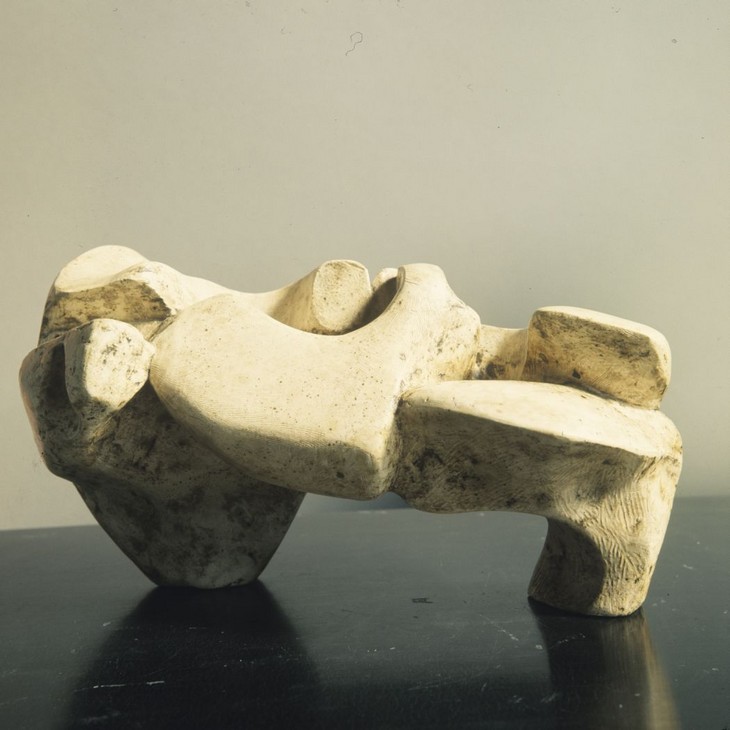
Henry Moore
Slow Form: Tortoise 1962
Plaster
Art Gallery of Ontario, Toronto
© The Henry Moore Foundation. All Rights Reserved
Fig.2
Henry Moore
Slow Form: Tortoise 1962
Art Gallery of Ontario, Toronto
© The Henry Moore Foundation. All Rights Reserved
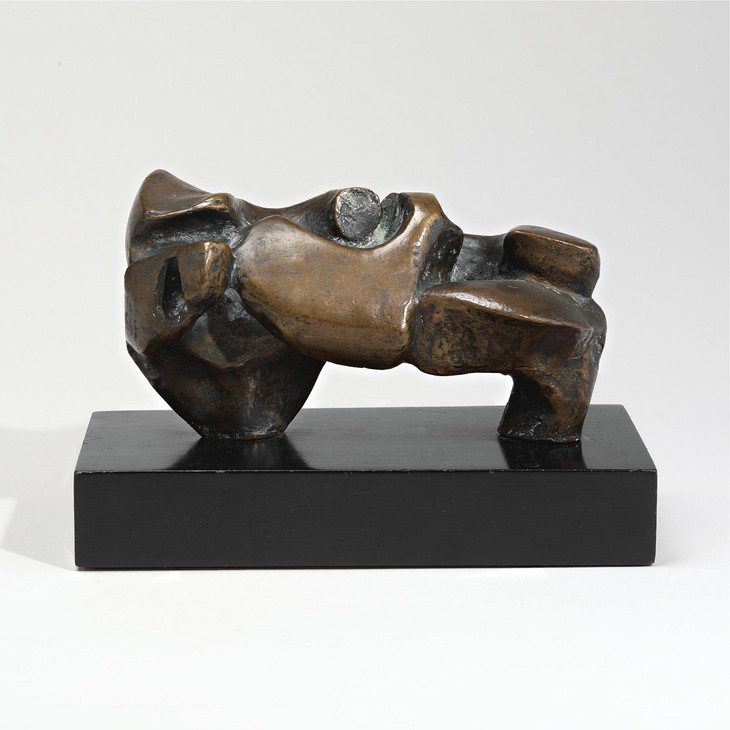
Henry Moore
Slow Form: Tortoise 1962, cast 1968
Bronze
Arts Council Collection
© The Henry Moore Foundation. All Rights Reserved
Fig.3
Henry Moore
Slow Form: Tortoise 1962, cast 1968
Arts Council Collection
© The Henry Moore Foundation. All Rights Reserved
In 1968 Moore also began working up Slow Form: Tortoise to a larger scale. The dots and numbers pencilled onto the plaster version of Slow Form: Tortoise indicate that it was used as a guide for the enlarged plaster version of Large Slow Form. The enlargement work would have been carried out in the White Studio at Hoglands by Moore’s studio assistants, who in 1968 were Colin Barker, John Farnham, Ramy Shuklinsky and Yeheskiel Yardini. Moore was able to allocate the bulk of his enlargement work to others because, as curator Julie Summers has noted, it was ‘a scientific rather than artistic process’.2 Once the full-size plaster version of Large Slow Form was near completion Moore would then take over to finish the detailing of the surface.
The sculpture has a slightly granular texture and fine lines and tool marks indicate where Moore has worked into the surface of the original plaster (fig.4). Large Slow Form was also cast at the Art Bronze Foundry, mostly likely using the sand casting technique judging by the light, speckled texture of the finished bronze surface.
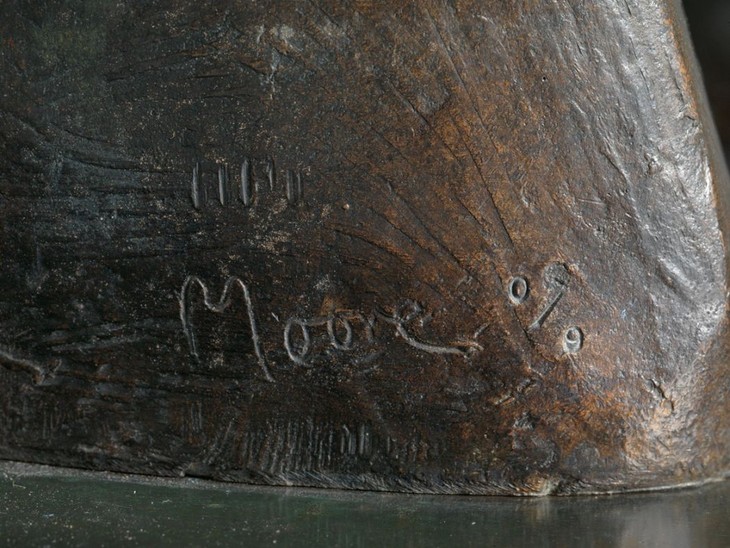
Detail of artist's signature and edition number on Large Slow Form 1962, cast 1968
Tate T02290
© The Henry Moore Foundation. All Rights Reserved
Fig.5
Detail of artist's signature and edition number on Large Slow Form 1962, cast 1968
Tate T02290
© The Henry Moore Foundation. All Rights Reserved
After casting at the foundry the sculptures were returned to Moore so that he could inspect the quality of the casting and make decisions about patination. A patina is the surface colour of a sculpture and is usually achieved by applying chemical solutions to the heated bronze surface. Tate’s copy of Large Slow Form has a fairly consistent dark brown patina with lighter, golden brown areas confined largely to the sculpture’s high points.
Moore and animals
Because Moore associated the shape of Slow Form: Tortoise, and therefore Large Slow Form, with a tortoise, both sculptures have generally been regarded as examples of the artist’s engagement with animal forms. As early as 1934 the critic Herbert Read identified animals as one of Moore’s key interests. According to Read, in his animal sculptures from the 1920s Moore reduced the subject to certain basic shapes or features ‘which best denote its vitality’.6 ‘Vitality’ was a concept that Moore himself had highlighted in his 1933 statement for the publication Unit One.7 In this text Moore explained that, ‘for me a work must first have a vitality of its own. I do not mean a reflection of the vitality of life, of movement, physical action, frisking, dancing figures and so on, but that a work can have in it a pent-up energy, an intense life of its own, independent of the object it may represent’.8 This idea that ‘vitality’ conveys the essential life force of a creature more convincingly than naturalistic representation may account for the arrangement of forms in Large Slow Form.
According to W.J. Strachan, author of the publication Henry Moore: Animals (1983), ‘between 1921 and 1982 Henry Moore has made fifty-eight animal sculptures and has drawn many scores of animals – domestic, wild, fantastic’.9 Regarding Large Slow Form, Strachan proposed that as well as suggesting the movement of a tortoise, the sculpture’s surface recalled the ‘armour-plated’ hide of a rhinoceros.10 However, Strachan also noted that many of Moore’s animal sculptures took ‘liberties with reality’ and often had no clear referent in nature.11 This observation echoes the critic John Russell’s claim in 1973 that, ‘Over and over again in the 1950s and 1960s Moore invented animal-forms which belong to no known bestiary and yet are quintessentially plausible. We can’t give name to them, but we accept the fact of their existence’.12
In 2006 the sculptor Anthony Caro, who had served as Moore’s studio assistant between 1951 and 1953, wrote of Large Slow Form:
When I saw this piece in the Tate for the first time ... I got a surprise: it didn’t look like a Henry Moore. I thought it was a marvellous piece. It’s untypical ... it’s because he seems to have gone away from using flints, stones or bones as a starting point, but has invented his own forms. And it has such unity, it feels like a carving: it has that strength and weight.13
The Henry Moore Gift
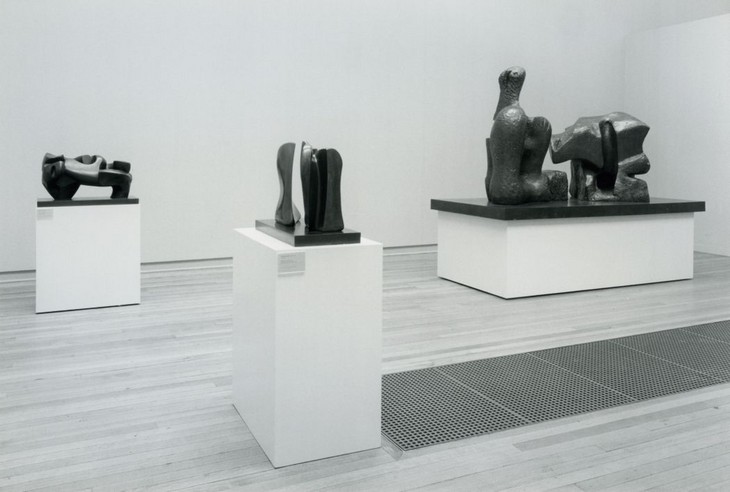
Installation view of the exhibition The Henry Moore Gift, Tate Gallery, 1978
Tate
© The Henry Moore Foundation. All Rights Reserved
Fig.6
Installation view of the exhibition The Henry Moore Gift, Tate Gallery, 1978
Tate
© The Henry Moore Foundation. All Rights Reserved
Other casts of Large Slow Form are held in the collections of the Museo Tamayo Arte Contemporaneo, Mexico City; Hakone Open Air Museum, Japan; and The Henry Moore Foundation, Perry Green.
Alice Correia
April 2013
Notes
Julie Summers, ‘Fragment of Maquette for King and Queen’, in Claude Allemand-Cosneau, Manfred Fath and David Mitchinson (eds.), Henry Moore From the Inside Out: Plasters, Carvings and Drawings, Munich 1996, p.126.
David Mitchinson, ‘The Henry Moore Foundation’s Collection’, in David Mitchinson (ed.), Celebrating Moore: Works from the Collection of the Henry Moore Foundation, London 2006, p.20.
Henry Moore, ‘Statement for Unit One’, in Herbert Read (ed.), Unit One: The Modern Movement in English Architecture, Painting and Sculpture, London 1934, pp.29–30, reprinted in Alan Wilkinson (ed.), Henry Moore: Writings and Conversations, Aldershot 2002, pp.191–3.
Anthony Caro, ‘Large Slow Form’, in David Mitchinson (ed.), Celebrating Moore: Works from the Collection of the Henry Moore Foundation, London 2006, p.273
Related essays
- Scale at Any Size: Henry Moore and Scaling Up Rachel Wells
- Henry Moore: The Plasters Anita Feldman
- Henry Moore's Approach to Bronze Lyndsey Morgan and Rozemarijn van der Molen
Related catalogue entries
Related material
-
Photograph
How to cite
Alice Correia, ‘Large Slow Form 1962, cast 1968 by Henry Moore OM, CH’, catalogue entry, April 2013, in Henry Moore: Sculptural Process and Public Identity, Tate Research Publication, 2015, https://www

